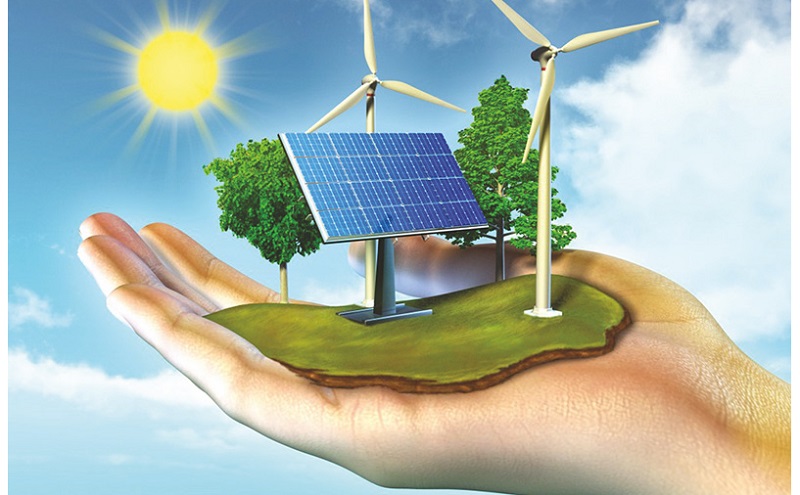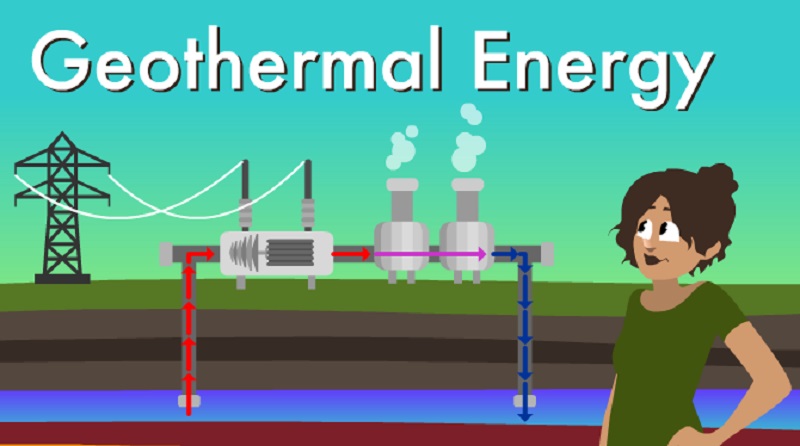
Climate change is a pressing issue to the world and the need to transition to renewable energy sources is paramount. In this context, several countries are emerging as leaders in the green energy revolution, spearheading the development and implementation of renewable energy technologies. This article delves into these frontrunners, exploring their strategies, achievements, and the factors contributing to their success.
Table of Contents
Leading Countries of Renewable Energy
While several nations are making significant strides in renewable energy, a few stand out for their exceptional progress. Here’s a glimpse at the current frontrunners:
- Iceland: This island nation boasts a remarkable achievement – over 85% of its total energy consumption comes from renewable sources, primarily geothermal and hydropower. Iceland’s unique geographical location, with active volcanoes and abundant rivers, provides a natural advantage for harnessing these clean energy sources.
- Norway: Following closely behind Iceland is Norway, where hydropower reigns supreme. With a staggering 98% of its electricity generation derived from renewables, Norway exemplifies a successful transition from fossil fuels. The country’s vast hydroelectric resources and commitment to clean energy policies have paved the way for this impressive feat.
- Costa Rica: A shining example in the developing world, Costa Rica has consistently achieved close to 100% renewable energy production for its electricity needs over the past decade. Geothermal, wind, solar, and biomass sources contribute to this remarkable achievement. Costa Rica’s dedication to sustainability and its progressive environmental policies have made it a global leader in clean energy transition.
- Brazil: This South American giant is a major player in the renewable energy sector. With nearly 90% of its electricity generation coming from renewables, primarily hydropower, Brazil demonstrates the potential for large-scale adoption of clean energy. Additionally, Brazil is actively exploring solar and wind energy sources for further diversification.
- New Zealand: With a stunning landscape dotted with geothermal vents and powerful winds, New Zealand leverages its natural resources for clean energy production. The country boasts a significant share of its electricity generation (over 85%) derived from renewables, with hydropower, wind, and geothermal sources leading the charge.
These are just a few of the countries leading the green energy revolution. Others like Denmark, Portugal, Sweden, Uruguay, and Kenya are also making significant strides in this crucial endeavor.
What Makes These Countries Successful?
The success of these frontrunners can be attributed to several key factors:

- Favorable Natural Resources: Countries like Iceland, Norway, Costa Rica, and New Zealand are blessed with abundant natural resources like geothermal vents, strong winds, and fast-flowing rivers, making them ideal for harnessing renewable energy sources like hydropower, geothermal, and wind power.
- Policy and Investment: Strong government policies promoting renewable energy development, coupled with significant investments in infrastructure and research, are crucial drivers of progress. Feed-in tariffs, subsidies, and tax breaks incentivize renewable energy projects, while research and development contribute to technological advancements, further enhancing efficiency and cost-effectiveness.
- Public Support: Strong public support for renewable energy initiatives is essential for long-term success. Educational campaigns, community engagement programs, and green energy awareness initiatives foster public understanding and encourage wider adoption.
- Technological Innovation: Advancements in renewable energy technologies are crucial for scaling up and increasing the efficiency of clean energy production. Countries are actively investing in research and development to improve existing technologies and explore new possibilities like solar thermal energy and wave energy.
Addressing Challenges: The Road Ahead for Green Energy
Despite the remarkable progress made by these leading countries, several challenges remain on the path to a truly sustainable future powered by renewables. Here are some key areas of focus:
- Energy Storage: A major hurdle is the intermittent nature of some renewable energy sources like solar and wind. Developing efficient and cost-effective energy storage solutions, such as advanced batteries and pumped hydro storage, is crucial to ensuring a reliable and stable energy supply.
- Grid Modernization: Existing electricity grids may not be equipped to handle the fluctuating nature of renewable energy sources. Upgrading and modernizing grids with smart technology is necessary to integrate renewables seamlessly and optimize energy distribution.
- Cost Reduction: While renewable energy technologies are becoming more affordable, further cost reductions are needed to make them truly competitive with fossil fuels. Continued research and development, coupled with economies of scale achieved through increased deployment, can drive down costs.
The Human Factor: Collaboration is Key
The global transition to green energy requires a collaborative effort. Technology sharing, knowledge transfer, and joint research initiatives between developed and developing countries can accelerate progress. Additionally, international policies and financial mechanisms can provide support and incentivize developing nations to adopt clean energy solutions.
A Brighter Future: The Power of Green Energy
By embracing renewable energy, these leading countries are paving the way for a more sustainable future. The benefits are far-reaching:
- Environmental Protection: Renewables generate clean energy with minimal greenhouse gas emissions, combating climate change and reducing air pollution. This translates to improved public health, reduced respiratory illnesses, and a healthier planet.
- Energy Security: Relying less on dwindling fossil fuel reserves and volatile energy markets enhances energy security. Renewable resources are domestically available, reducing dependence on foreign energy sources and geopolitical fluctuations.
- Economic Growth: The green energy sector is a burgeoning industry, creating new jobs in areas like manufacturing, installation, and maintenance of renewable energy infrastructure. This fosters economic growth and diversification, attracting investment and creating new opportunities.
- Energy Sustainability: Renewable energy sources are naturally replenished, unlike fossil fuels which are finite resources. This ensures a long-term, sustainable energy supply for future generations.
Leading by Example: Inspiring Change
The success stories of these countries serve as a powerful source of inspiration for others. They demonstrate that transitioning to a renewable energy future is not only possible, but also achievable with the right policies, investments, and public support.
Developing nations, especially those with abundant natural resources, can learn from the experiences of these frontrunners. By adapting successful strategies and securing international support, these countries can accelerate their own green energy journeys.
Latest FAQs on Green Energy Leaders and Renewable Energy:
1. Are there any drawbacks to using renewable energy sources?
Yes, there are some limitations to consider. While renewable energy sources are generally clean, some technologies, like large hydroelectric dams, can have environmental impacts on ecosystems. Additionally, the intermittent nature of solar and wind power can pose challenges for grid stability, and energy storage solutions are still under development.
2. What are some of the latest advancements in renewable energy technology?
There’s ongoing progress in several areas. More efficient solar panels are being developed, and advancements in battery technology are improving energy storage capabilities. Offshore wind farms are becoming more powerful, and innovations in wave and tidal energy are offering promising future possibilities.
3. How can individuals get involved in the green energy movement?
There are several ways! You can start by adopting energy-efficient practices at home and supporting companies committed to sustainability. Look into options for installing solar panels on your roof or subscribing to community solar programs. Educate yourself and others about the importance of renewable energy, and advocate for policies that promote clean energy adoption.
4. What are some of the challenges developing countries face in adopting renewable energy?
The initial cost of setting up renewable energy infrastructure can be high, and access to financing can be limited. Additionally, a lack of technical expertise and skilled labor can hinder development. International collaboration and financial aid programs can play a crucial role in overcoming these hurdles.
5. What is the future outlook for renewable energy?
The future for renewable energy is bright! Costs are projected to continue decreasing, making them even more competitive with fossil fuels. Technological advancements will further enhance efficiency and storage capabilities. As global concerns about climate change intensify, the transition to a renewable energy future is expected to accelerate.
6. Is nuclear energy considered a renewable energy source?
No, nuclear energy is not generally classified as a renewable energy source. While nuclear power plants don’t produce greenhouse gas emissions during operation, they raise concerns about nuclear waste disposal and the risk of accidents. Additionally, the fuel source, uranium, is a finite resource.
7. What are some of the policy initiatives that can promote renewable energy adoption?
Several policy tools can incentivize the use of renewables. These include:
- Feed-in tariffs: These guarantee a fixed price for electricity generated from renewable sources, making them more attractive for investors.
- Tax credits and rebates: Offering tax breaks or rebates on the purchase and installation of renewable energy systems encourages homeowners and businesses to switch.
- Renewable Portfolio Standards (RPS): These policies mandate that electricity providers source a certain percentage of their electricity from renewable sources.
- Streamlining permitting processes: Simplifying the process for obtaining permits for renewable energy projects can expedite development.
8. How can we ensure a reliable energy supply with a higher dependence on renewable sources?
There are a few key strategies:
- Grid Modernization: Upgrading the electricity grid with smart technology allows for better integration of renewable energy sources and facilitates two-way communication between energy producers and consumers.
- Energy Storage: Developing cost-effective and efficient energy storage solutions like advanced batteries and pumped hydro storage is crucial to compensate for the intermittent nature of some renewables.
- Energy Mix Diversification: Utilizing a diverse mix of renewable energy sources like solar, wind, geothermal, and hydro helps mitigate the impact of fluctuations in any single source.
9. What are some of the biggest green energy companies in the world?
Several companies are leading the charge in developing and implementing renewable energy solutions. Some prominent examples include:
- Siemens Gamesa (Wind turbine manufacturer)
- Vestas Wind Systems (Wind turbine manufacturer)
- Longi Solar (Solar panel manufacturer)
- SunPower (Solar panel manufacturer)
- Engie (Renewable energy developer and operator)
- NextEra Energy (Renewable energy developer and operator)
10. How can I learn more about green energy and get involved in the movement?
There are many resources available online and in your community. Here are a few starting points:
- Websites of government agencies focused on renewable energy (e.g., Department of Energy in the US)
- Websites of non-profit organizations promoting renewable energy (e.g., The Sierra Club, Greenpeace)
- Industry publications and news websites focused on clean energy
- Local renewable energy companies and installers
- Educational workshops and events offered by community organizations
Conclusion: A Collective Responsibility
The transition to a green energy future is not just about individual countries; it’s a global responsibility. By fostering collaboration, sharing knowledge, and investing in renewable energy technologies, we can create a cleaner, more sustainable future for generations to come. As these leading countries demonstrate, the time to embrace green energy is now. With continued commitment and innovation, we can build a world powered by clean energy, ensuring a healthier planet and a brighter future for all.






